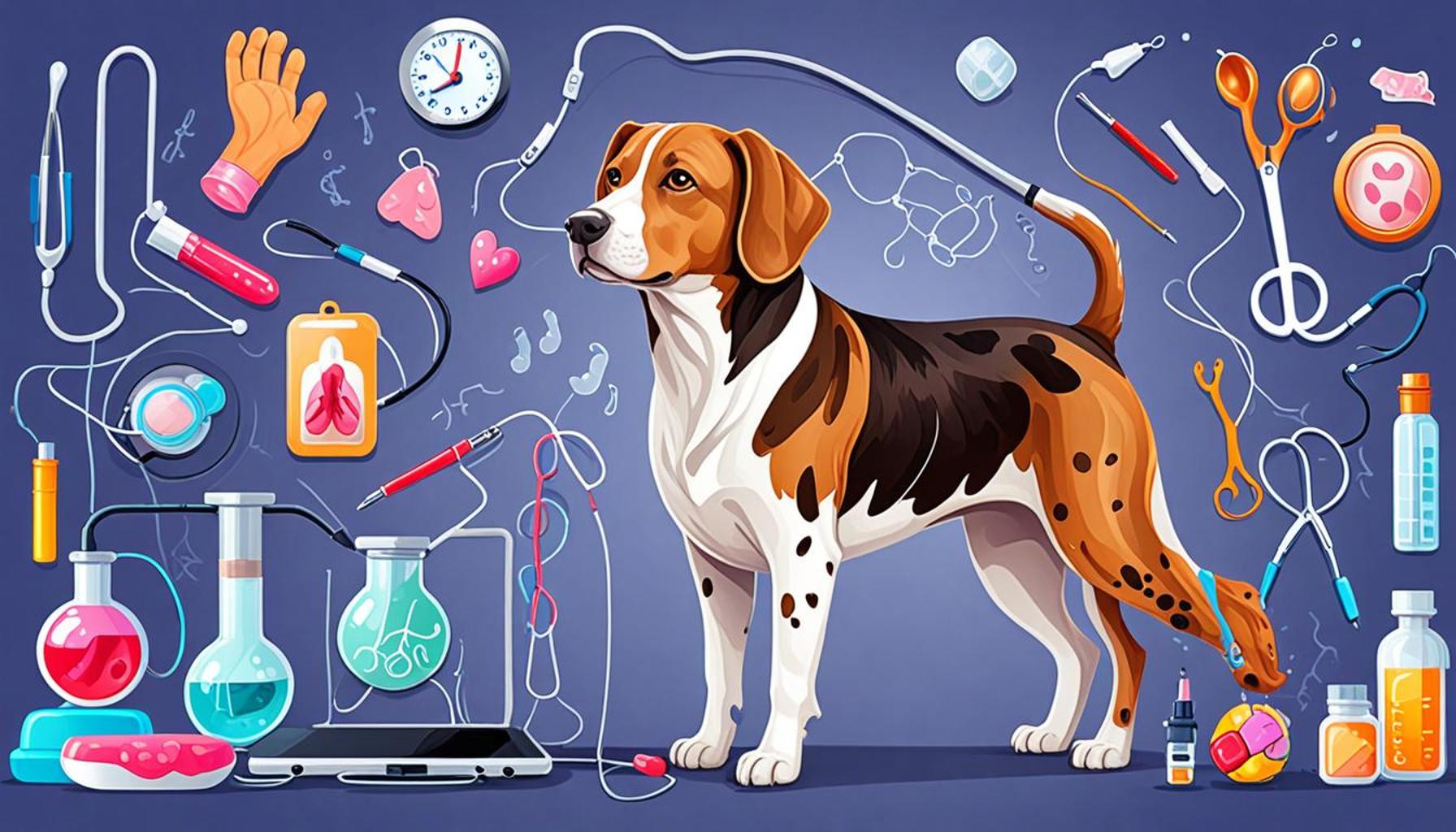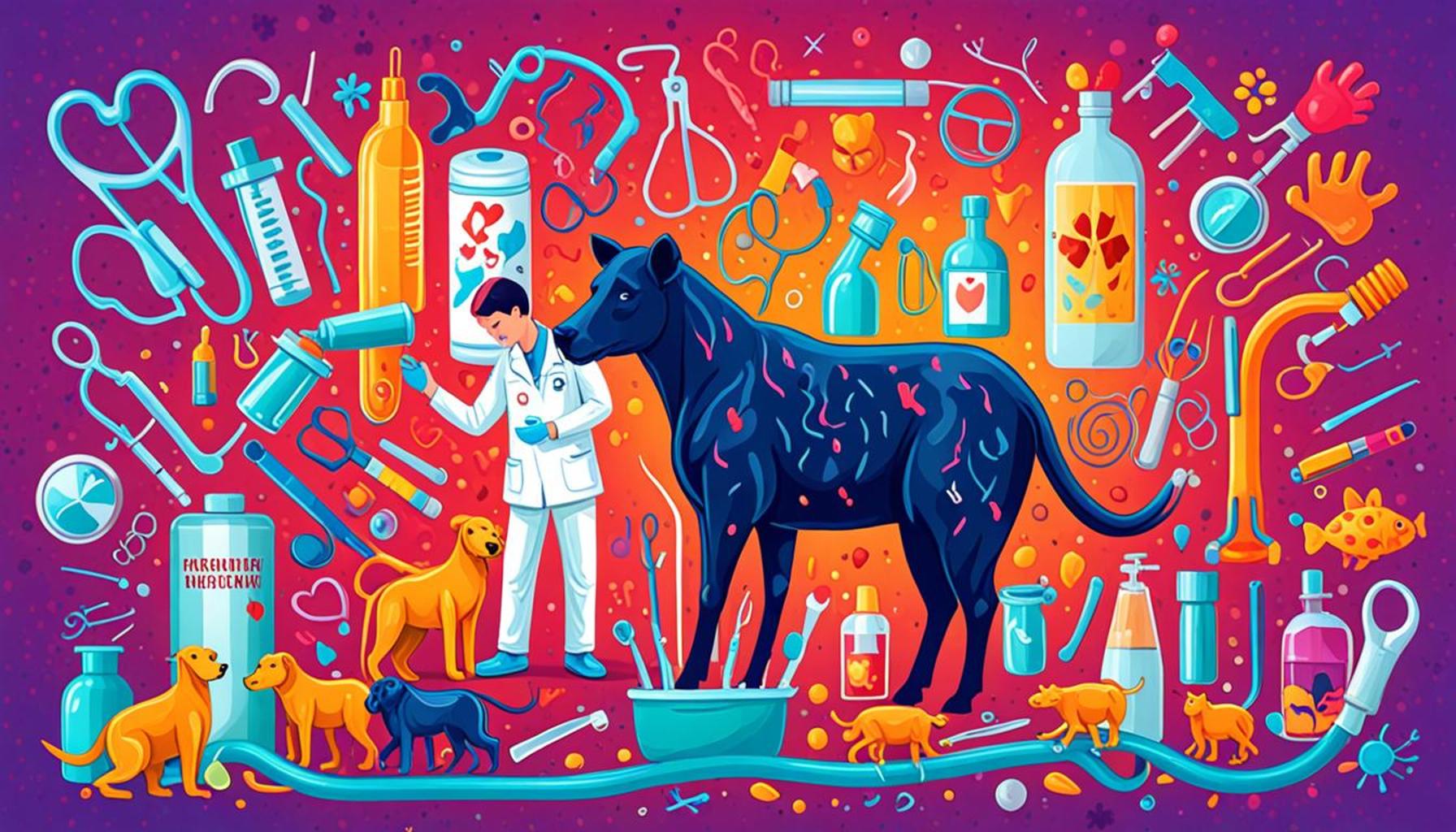Advances in Veterinary Treatments: How Technology Is Transforming Pet Health

Transforming Veterinary Medicine Through Technology
In recent years, an exciting evolution has taken place within veterinary medicine, transforming how pet owners access and manage healthcare for their animals. This change is largely driven by scientific breakthroughs, technological innovations, and increased awareness regarding pet health issues. With more people viewing pets as integral family members, the need for advanced veterinary care that parallels human healthcare is more significant than ever.
Telemedicine has emerged as a game changer, especially highlighted during the COVID-19 pandemic when many pet owners struggled to access in-person veterinary visits. Now, virtual consultations allow veterinarians to assess pets through video and chat platforms, enabling pet owners to seek immediate advice for non-emergency issues without leaving home. This service not only reduces stress for pets and owners alike but also enhances accessibility, particularly for those in rural areas or with mobility challenges. A recent survey indicated that 58% of pet owners would opt for virtual care options, signaling an ongoing shift in how care is delivered.
Wearable Devices are another fascinating advancement in veterinary health. Just like fitness trackers for humans, devices such as pet collars equipped with GPS and health monitoring applications allow owners to track their pets’ activity levels, heart rates, and overall well-being. By monitoring these vital signs, veterinarians can identify potential health issues before they manifest into serious conditions. For example, an unexpected dip in activity levels may signal discomfort or illness, prompting timely intervention. Some devices even provide notifications for vaccination schedules, ensuring that pet owners are well-informed about their companion’s health needs.
3D Printing technology has also begun to revolutionize animal care, offering customized solutions for various medical conditions. From prosthetic limbs for dogs recovering from accidents to intricate surgical implants, veterinarians can now create tailored solutions that can help pets regain their quality of life. For instance, a dog that has undergone a leg amputation can receive a 3D-printed prosthetic that fits its unique anatomy, allowing for improved mobility and comfort.
The incorporation of big data and artificial intelligence into veterinary practices represents yet another significant leap forward. By analyzing vast amounts of data collected from patient histories and treatment outcomes, AI algorithms can help veterinarians make more accurate diagnoses and personalized treatment plans. This technology anticipates not just the typical conditions, but also uncommon diseases based on breed or age, giving pet owners peace of mind that their pets are receiving the best care tailored specifically for them.

As the landscape of pet ownership continues to evolve in the United States, understanding these technological advancements in veterinary medicine is crucial. They offer not just better diagnostics and treatment options, but fundamentally improve the standard of care for our beloved animals. With ongoing innovation and a commitment to animal welfare, the future looks promising for both veterinarians and pet owners. Stay tuned as we delve deeper into each of these advancements and discover how they are shaping the future of veterinary care.
DISCOVER MORE: Click here to learn about positive reinforcement in dog training
Revolutionizing Diagnosis and Treatment
As technology continues to advance, a variety of innovative tools and methods are emerging, reshaping how veterinarians diagnose and treat illnesses in pets. One of the most significant developments in this arena is the rise of diagnostic imaging technologies. Traditional x-rays are being complemented—and in some cases, replaced—by more sophisticated imaging techniques such as ultrasound, CT scans, and MRI. These technologies allow veterinarians to observe internal structures with unprecedented clarity, aiding in quicker and more precise diagnoses. For example, a veterinary clinic equipped with an MRI machine can pinpoint tumors or lesions in a matter of moments, streamlining the diagnosis process and significantly enhancing the treatment plan.
The advent of lab-on-a-chip technology is another groundbreaking aspect of veterinary medicine. These miniature devices can conduct multiple laboratory tests using just a small sample of blood or saliva, providing rapid results that can dramatically impact treatment decisions. With the ability to test for various conditions simultaneously, this technology not only saves valuable time in emergency situations but also empowers veterinarians to monitor chronic diseases and adjust medications effectively. Pet owners can rest easy knowing that their furry friends are being subjected to less invasive procedures while still receiving the highest quality care.
Furthermore, the incorporation of robotics into surgical procedures is making waves in veterinary practices across the country. Robotic-assisted surgeries, which provide greater precision than traditional methods, are becoming more common for complex procedures such as orthopedic surgeries. These systems utilize advanced algorithms that enhance a veterinarian’s capabilities, enabling them to perform intricate surgeries with minimal invasiveness. As a result, pets benefit from shorter recovery times and fewer complications, giving pet owners hope for a brighter outcome.
To illustrate the impact of these technological advancements in veterinary treatments, consider the following key benefits:
- Improved accuracy: Advanced imaging and diagnostic tools lead to more accurate disease identification.
- Enhanced treatment efficacy: Personalized medicine, driven by big data analytics, tailors treatments to individual pets’ needs.
- Reduced recovery time: Robotic surgeries result in less trauma to tissues, promoting faster healing.
- Cost-effectiveness: Reduced need for complicated follow-up procedures, thanks to proactive disease management.
As technology continues to evolve, veterinary medicine is likely to see even more dramatic improvements. With ongoing research and innovation paving the way, the landscape of pet health is changing rapidly. Pet owners who stay informed about these advancements can better advocate for their animals, seeking the best possible care available in this age of technological marvel. In the following sections, we will delve deeper into specific advancements and their implications for pet health, exploring how these trends are shaping a more responsive and efficient veterinary care system.
As technology continues to evolve, the impact on veterinary treatments sees remarkable advancements, particularly in areas such as diagnostics and minimally invasive procedures. With the integration of artificial intelligence, veterinarians can now analyze patient data more accurately, identifying potential health issues early. This proactive approach leads to timely interventions and better outcomes for pets.Another significant advancement is the use of telemedicine in veterinary care. This convenience allows pet owners to consult with veterinarians remotely, reducing stress for both the pet and the owner. With video consultations, common health concerns can be addressed without an office visit, making veterinary care more accessible than ever.Moreover, innovations in surgical technology, such as robotic-assisted surgeries, are transforming the landscape of complex procedures. These advanced systems enhance precision and significantly reduce recovery times, allowing pets to return to their normal activities sooner. Furthermore, wearable technology for pets is gaining traction. Devices that track health metrics, activity levels, and other vital signs empower owners to monitor their pets’ well-being actively. This data helps veterinarians customize health plans based on real-time information, ultimately contributing to a longer and healthier life for pets.The combination of these technological advances in veterinary treatments not only enhances the quality of care but revolutionizes the way pet health is perceived and managed. As research continues, we can expect even more innovative solutions to emerge, further transforming the veterinary landscape.
| Category | Details |
|---|---|
| Diagnostic Innovations | AI and Analytics are enabling earlier detection of health issues in pets, leading to proactive treatments. |
| Telemedicine | Telehealth options make veterinary care accessible and less stressful for pets and owners alike. |
| Surgical Advances | Robotic surgeries improve precision and recovery times for complex procedures. |
| Wearable Tech | Devices allow pet owners to monitor health metrics, enhancing personalized care. |
DISCOVER MORE: Click here to learn how stress affects your pets
Integrating Telehealth and Wearable Technology
The integration of telehealth is another remarkable advancement in veterinary treatments, particularly in light of recent global events that have pushed the boundaries of remote health services. Telemedicine allows veterinarians to consult with pet owners remotely, ensuring that animals receive timely guidance without the need for a physical visit. For instance, platforms designed for veterinary telehealth enable pet owners to reach out to specialists from the comfort of their homes, facilitating immediate assessments and reducing the stress associated with traditional vet visits. This proactive approach not only saves time but also addresses minor health concerns before they escalate into critical situations.
Supporting this virtual revolution is the rise of wearable technology, a category seeing significant uptake in the pet health market. Devices like smart collars and fitness trackers monitor pets’ activity levels, heart rates, and sleeping patterns, providing invaluable data to both owners and veterinarians. By identifying deviations from normal behavior, veterinarians can spot early signs of health issues. For example, if a dog suddenly becomes lethargic or shows changes in eating habits, the data collected from its wearable device can aid the veterinarian in diagnosing conditions ranging from anxiety to heart disease. This data-driven approach promotes a culture of preventive care, leading to healthier, happier pets.
Smart Innovations for Chronic Conditions
Technology also offers promising solutions for managing chronic conditions common among pets. The use of mobile applications allows pet owners to track their pets’ health metrics and medication schedules effortlessly. Applications such as Pet First Aid provide resources including medication reminders, veterinary contacts, and symptom checkers. This empowers pet owners to take active roles in managing their pet’s healthcare, enhancing outcomes for chronic illnesses such as diabetes or arthritis.
Moreover, advancements in biotechnology are proving transformative for the treatment of serious pet illnesses. The development of gene therapy is becoming a focal point in veterinary medicine, offering potential cures for hereditary diseases that previously had no viable treatment options. Pharmaceutical companies are now investing in research focused on gene editing technologies, which could allow for tailor-made solutions for specific genetic disorders while reducing the reliance on long-term medication.
The Role of Artificial Intelligence in Veterinary Care
Additionally, artificial intelligence (AI) is making groundbreaking strides in the veterinary field. By analyzing vast datasets, AI algorithms can assist veterinarians in diagnosing conditions with higher accuracy. For example, integrating AI into diagnostic tools can provide risk assessments and recommend various treatment protocols based on individual patient histories. This level of precision not only enhances the quality of care, but it also supports veterinarians in making informed decisions more quickly, ensuring pets receive the best possible treatment in time-sensitive situations.
As these technologies become increasingly accessible to veterinary practitioners, the landscape of pet healthcare is evolving at a breathtaking pace. The impact of these advancements extends not just to immediate diagnostic and treatment capabilities, but also to building healthier lifestyles for our pets through continued monitoring and innovations in care. With a fervent emphasis on technology, veterinary medicine is on the cusp of an era filled with hope and unprecedented advancements, revolutionizing how we approach the health and well-being of our beloved companions.
DISCOVER MORE: Click here for tips on keeping your pet healthy
Conclusion: A New Era of Pet Health
The rapid advancements in veterinary treatments, fueled by cutting-edge technologies, signify a transformative chapter in pet health. As we have explored, the integration of telehealth and wearable technology has not only enhanced accessibility to veterinary care but also empowered pet owners to proactively monitor their furry companions. The embrace of mobile applications and biotechnology has further revolutionized the management of chronic conditions, offering tailored solutions and fostering a culture of preventative care.
Moreover, the role of artificial intelligence in diagnostics and treatment planning cannot be overstated. By leveraging complex data analytics, veterinarians can make informed decisions swiftly, resulting in improved health outcomes for pets facing acute or chronic challenges. This convergence of technology and veterinary medicine leads to a future where pet health is enhanced through personalization and precision, setting new standards for care.
As these innovations continue to evolve, they not only hold promise for better veterinary practices but also create a more profound bond between pets and their owners. This movement towards tech-enabled pet care is likely to spark discussions around ethical considerations and the responsibilities that come with such advancements. For pet owners, staying informed and engaged with these developments will be key to optimizing their pets’ health. The future of veterinary medicine is bright and brimming with possibilities, inviting us to explore these advancements further as we champion the health of our beloved companions.


